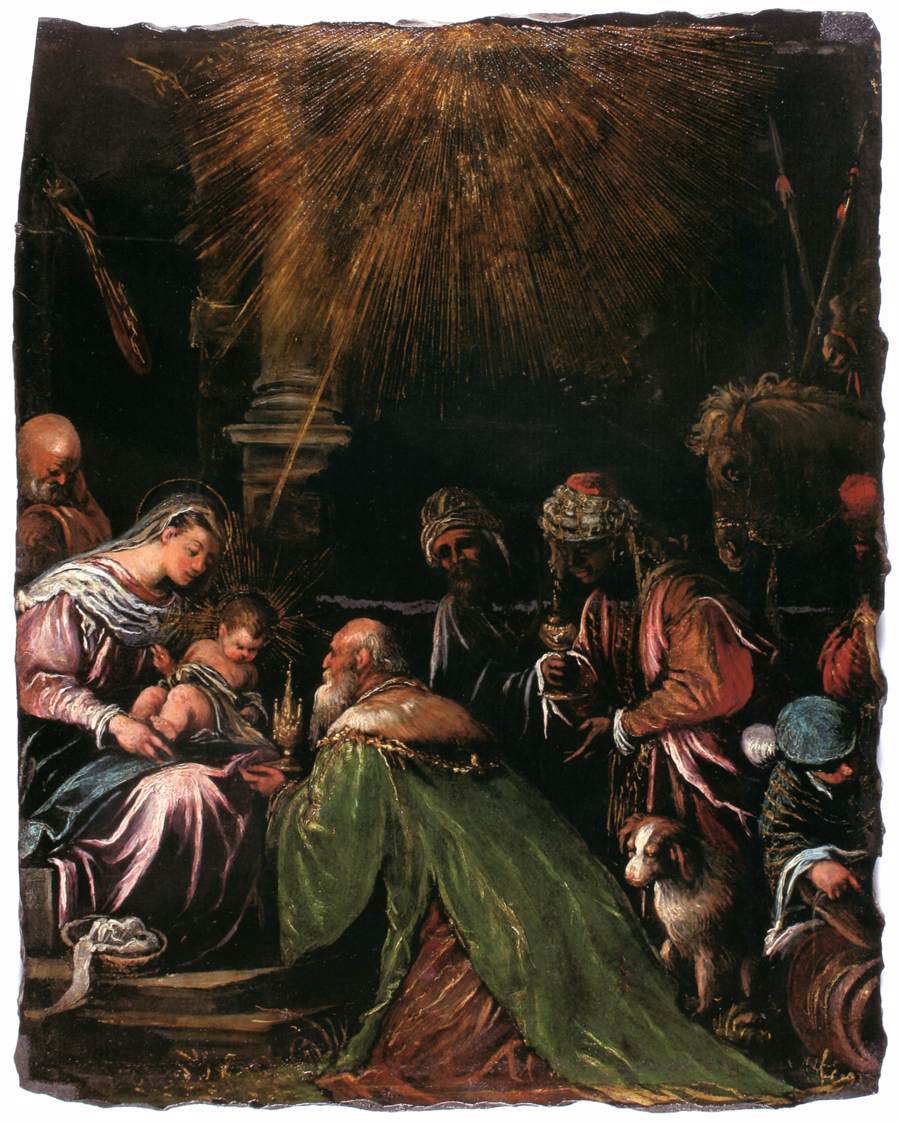Adoration of the Magi, Jacopo Bassano, oil on slate, 1580-85
Gospel (Matthew 2:1-12)
When Jesus was born in Bethlehem of Judea,
in the days of King Herod,
behold, magi from the east arrived in Jerusalem, saying,
“Where is the newborn king of the Jews?
We saw his star at its rising
and have come to do him homage.”
When King Herod heard this,
he was greatly troubled,
and all Jerusalem with him.
Assembling all the chief priests and the scribes of the people,
He inquired of them where the Christ was to be born.
They said to him, “In Bethlehem of Judea,
for thus it has been written through the prophet:
And you, Bethlehem, land of Judah,
are by no means least among the rulers of Judah;
since from you shall come a ruler,
who is to shepherd my people Israel.”
Then Herod called the magi secretly
and ascertained from them the time of the star’s appearance.
He sent them to Bethlehem and said,
“Go and search diligently for the child.
When you have found him, bring me word,
that I too may go and do him homage.”
After their audience with the king they set out.
And behold, the star that they had seen at its rising preceded them,
until it came and stopped over the place where the child was.
They were overjoyed at seeing the star,
and on entering the house
they saw the child with Mary his mother.
They prostrated themselves and did him homage.
Then they opened their treasures
and offered him gifts of gold, frankincense, and myrrh.
And having been warned in a dream not to return to Herod,
they departed for their country by another way.
+++
‘They prostrated themselves and did him homage’. It is striking that as we look at the humanity of Jesus this gospel draws us, with the Magi, to ‘prostrate ourselves and pay homage’. It draws us to recognize the divinity of the Child whom these men from the east came to see. In Jacopo Bassano’s painting above we see the profound adoration of one of the wise men offering his gift, not the usual approach of an admiring adult to an infant. We see Mary looking at her Child, not at the visitor, and St Joseph behind her lost in prayer. Even the dog seems to be caught up in the contemplation. (Last night a dog wandered in after the consecration in the chapel where I celebrated Mass for the Solemnity of Mary, Mother of God. The firecrackers for the New Year weren’t too loud yet but he probably felt safe in the presence of the Lord! He was only a slight distraction. I find that here in the Philippines dogs and cats rarely cause any problems whereas in Ireland people used to get very upset if a dog came into the church). The rays of light from above remind me of the fireworks with which people throughout the world welcomed the New Year.
In countries that still observe the Epiphany as a holyday of obligation on 6 January the gospel used today in the Mass for the Second Sunday after Christmas is the opening of St John’s Gospel, John 1:1-18, which in the Extraordinary Form of the Mass, which was used universally in the Roman Rite up to the 1960s, was read always at the end of the Mass, ‘The Last Gospel’. St John emphasizes the divinity of Christ and speaks of him as ‘the light that shines in the darkness’. John gives us those magnificent words ‘And the Word became flesh and dwelt among us, full of grace and truth; we have beheld his glory, glory as of the only Son from the Father’ (RSVCE).

No comments:
Post a Comment